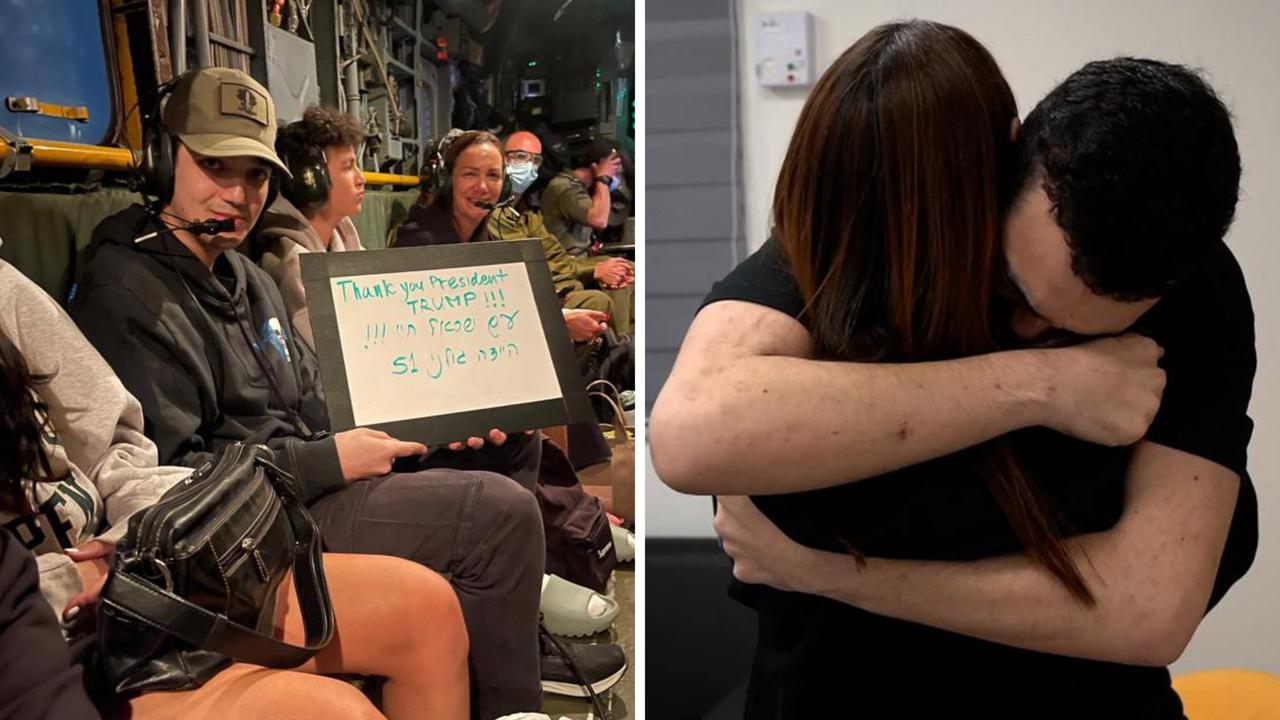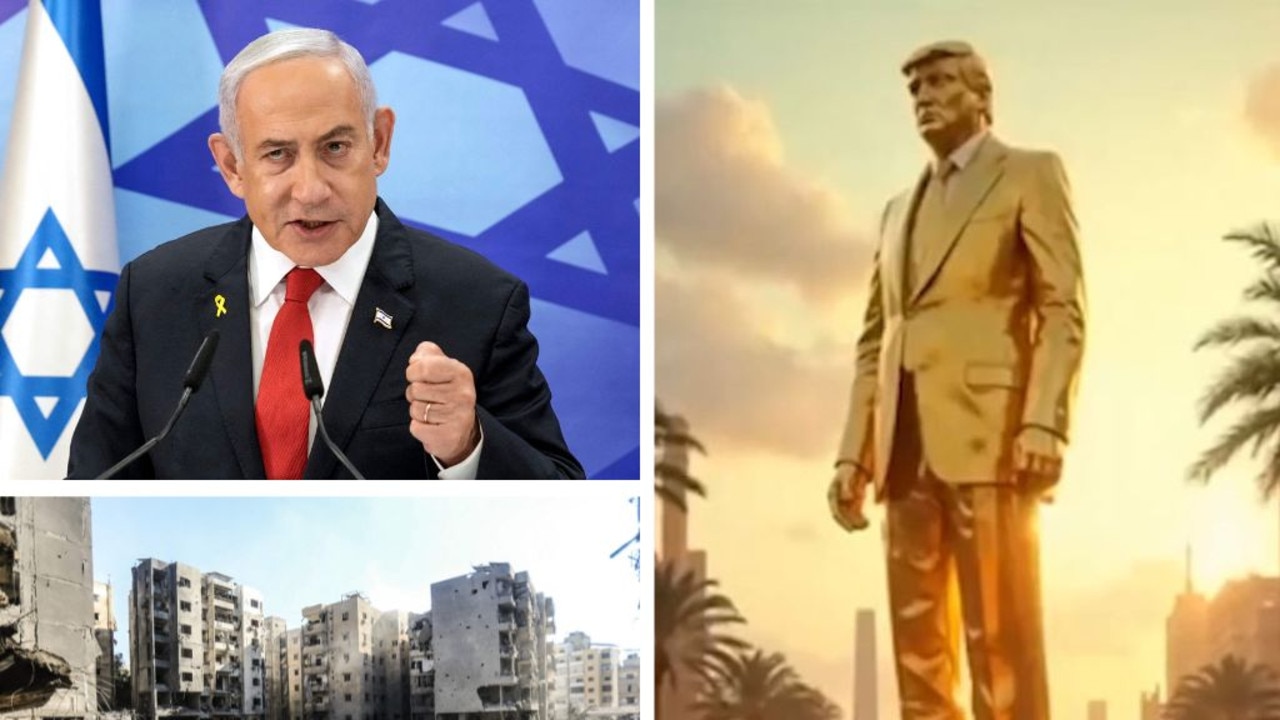Israel-Hamas war: Behind the smiles and waves of the hostages
The images are difficult to comprehend. Why do two Israeli hostages appear so amicable with Hamas after seven weeks in captivity?
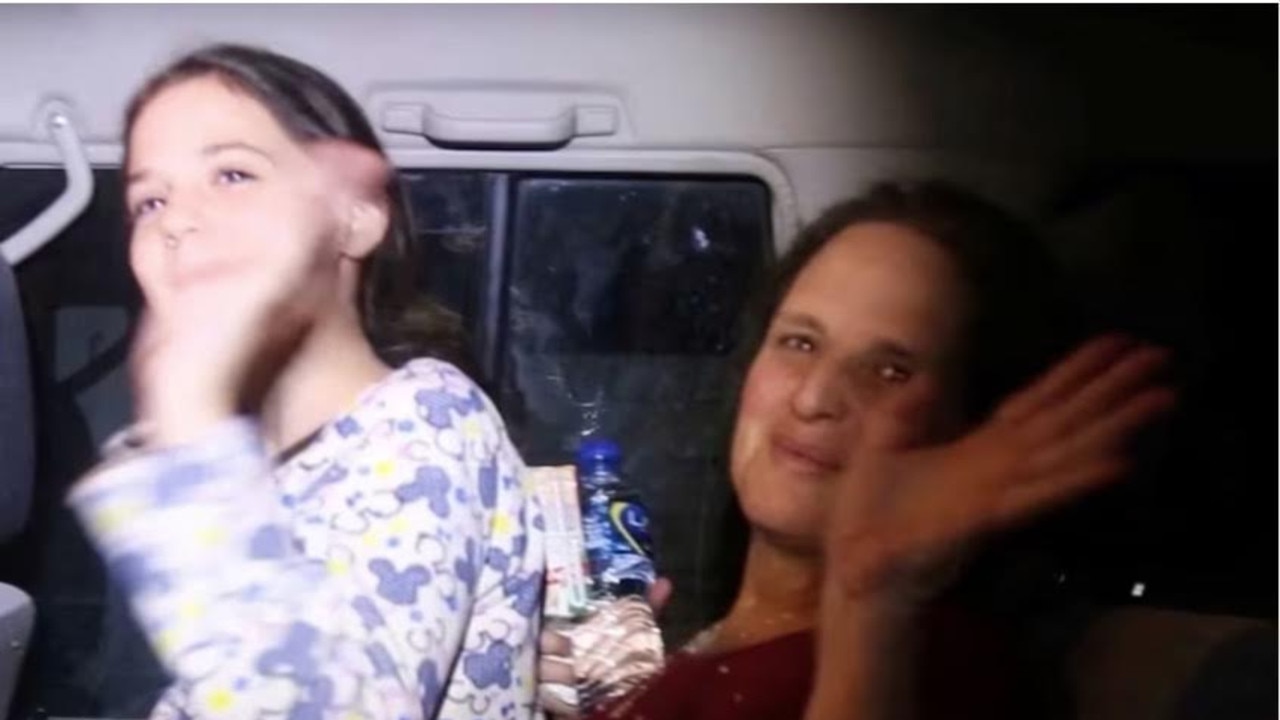
They are images that are difficult to comprehend.
Confronting footage shows two Israeli hostages – Sharon Avigdori and her 12-year-old daughter Noam – cheerily smiling and waving as they farewell their captors from inside a Red Cross vehicle.
The pair were snatched from their homes in the deadly October 7 Hamas attacks where 1500 Israelis lost their life.
Several members of their extended family, including Sharon’s brother, were reportedly murdered in the attacks.

But when they were released late November their smiling faces masked the horror they had experienced.
Middle Eastern expert Dr Ron Parat, a research associate with the Australian Centre for Jewish Civilisation, told news.com.au the hostage release was an exercise in “propaganda”.
“Hamas seeks to manipulate global public opinion by portraying itself as an organisation that upholds humanitarian values and distinguishes itself from groups like ISIS,” he said, speculating the hostages were made to wave as part of their release.
However, Dr Parat says this “contradicts most of their actions”.
“Hamas’ conduct lacks any semblance of humanitarians, and it disregards the liberal principles of preserving the dignity and lives of non-Muslim infidels”.
Dr Parat said while Hamas is trying to reverse its images in the west of being the Palestinian ISIS it was a “classic PR stunt and a diversionary tactic”.
“Hamas is trying to undermine the countless indisputable evidence, videos and photos and other pieces of information documenting in detail the atrocious and vile acts of murder rape, and massacre of children, elderly and people with disability and how Hamas killers burnt down whole families, including babies that were beheaded and much more.”
Ghaith al-Omari, who has previously held several positions within the Palestinian Authority, (PA) told the ABC that what helps Hamas propagate their message is the fact that there’s a lot of mainstream media outlets that are willing to amplify it.
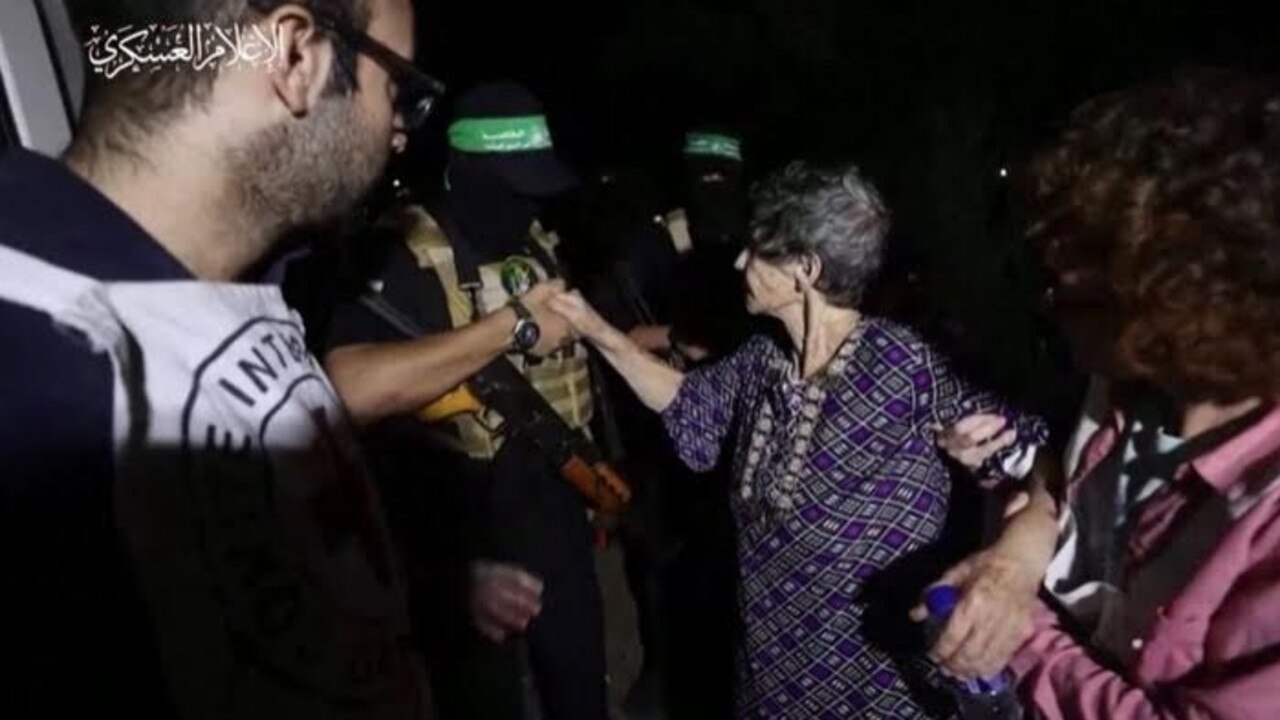
“I’m talking specifically about the Arab world. Many people just buy the Hamas narratives and this is certainly what I see in Palestinian media.
“I think their most sophisticated messaging goes specifically to the Arab audiences. That’s their primary audience,” he said.
The Avigdori release is not the first propaganda video Hamas has released of hostages.
An Israeli grandmother Yocheved Lifshitz famously gave her captor the sign of peace when she was released.
Ms Lifshitz, a peace activist, declared that while she “went through hell” and was beaten on the day she was captured, she was treated “gently” and shown “care” over the two weeks she was held.
She said a doctor was present and her captors “met all our needs” including for female hygiene.
The diet she ate (cheese, cucumber and pita) was even the same as the captors, she noted.
Whether it will work in changing perceptions is questionable.
However, the video of the Avigdoris release on Al Jazeera’s Facebook page is filled with praise for the militants for their manners and good treatment of the hostages.
Latest war developments
This weekend Israel and Hamas brushed off international calls to renew an expired truce Saturday as air strikes pounded militant targets in Gaza and Palestinian groups launched volleys of rockets.
Smoke again clouded the sky over the north of the Palestinian territory, whose Hamas government said 240 people had been killed since a pause in hostilities expired early Friday and combat resumed.
In Israel, the military’s Home Front Command reported 40 missile alerts in the south and centre of the country, and the Palestinian groups Hamas and Islamic Jihad announced “rocket barrages” against multiple Israeli cities and towns including Tel Aviv.
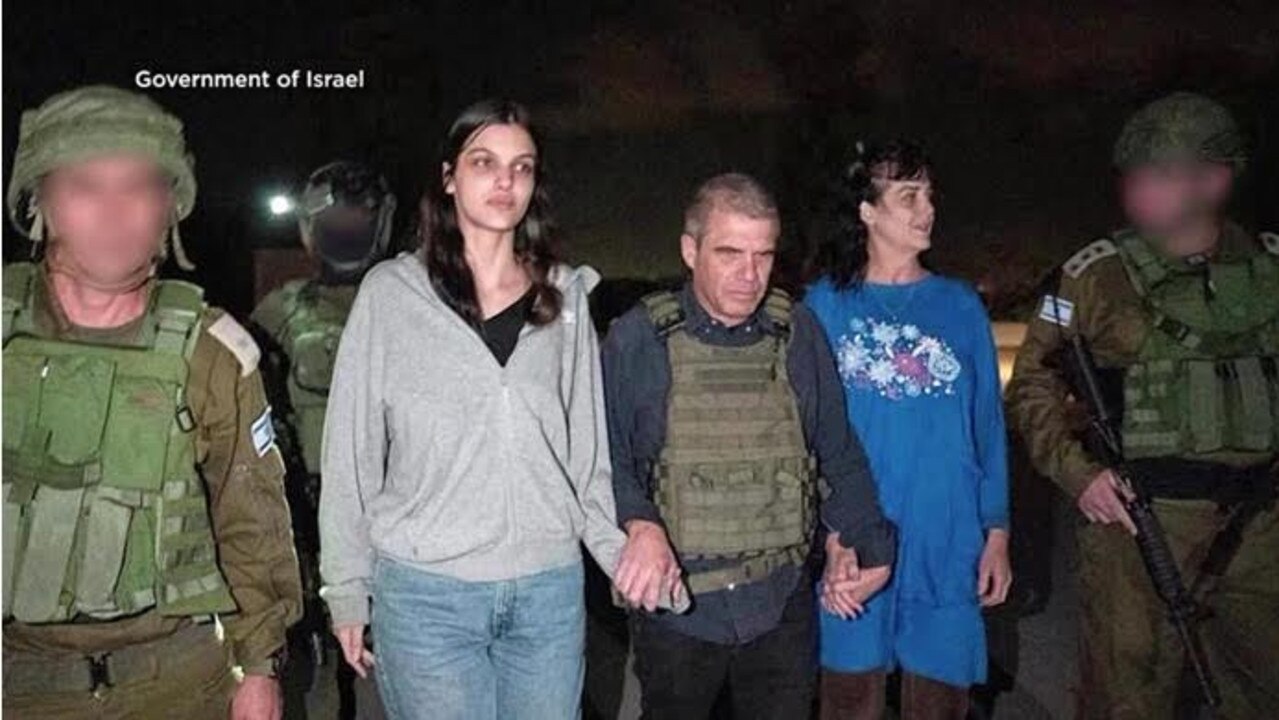
“Over 250 rockets have been fired at Israel since Friday morning,” Israeli military spokesman Lieutenant Colonel Peter Lerner told reporters. “The vast majority of those have not been successful in reaching their destination. Each one of those, obviously, is intended to kill Israelis.”
According to the United Nations, an estimated 1.7 million people in Gaza - more than two-thirds of the population - have been displaced by eight weeks of war.
Fadel Naim, chief doctor at the Al-Ahli Arab hospital in Gaza City, said his morgue had received 30 bodies on Saturday, including seven children.
“The planes bombed our houses: three bombs, three houses destroyed,” Nemr al-Bel, 43, told AFP, adding he had counted 10 dead in his family and “13 more still under the rubble”.
The population is short of food, water and other essentials, and many homes have been destroyed. UN agencies have declared a humanitarian catastrophe, although some aid trucks did arrive Saturday.
“Homes, hospitals and other infrastructure critical to the survival of the civilian population have suffered colossal destruction,” said Pascal Hundt, head of operations in Gaza for the International Committee of the Red Cross (ICRC).
“Current conditions do not allow for a meaningful humanitarian response, and I fear will spell disaster for the civilian population,” he added.
After the truce between Israel and Hamas expired on Friday, Israel had told NGOs not to bring aid convoys across the Rafah border crossing from Egypt, the Palestine Red Crescent Society had said.
But on Saturday, the charity said its Egyptian colleagues had managed to send over a number of trucks.



